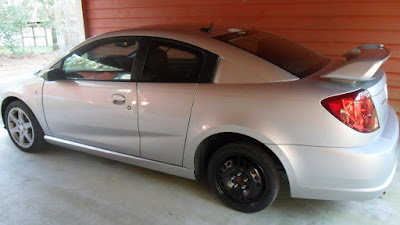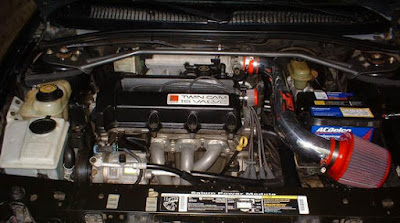After recently experiencing a significant surge in equity on my 18 month-old ATI Radeon 5850 (Thanks, Bitcoin!), I sold it and moved up to an Nvidia GTX 570. I'm rather pleased at this opportunity because I was looking for a reason to get out from under ATI. As I explained in my 5850 review from January 2010, the only reason I went with ATI is because Nvidia did not have a competitive card at that time. Burdened by development and manufacturing issues, Nvidia released the GTX 480 six-months later. It was clearly superior to ATI but at a consequence of being too big, loud, hot, and power hungry.
OPPOSING FORCES
Aside from the obvious divergence in calculating Stream Processors, the 570 now closely mirrors the 5850 with Nvidia's adoption of GDDR5 memory, a larger frame buffer, more transistors and a smaller 40nm die. The 570 is more evolutionary than revolutionary, which in this case, isn't necessarily a bad thing. It takes the brute force of the GTX 480 but improves upon it with multiple architectural enhancements. Believe it or not, my new 570 more visibly resembles my old GTX 260 than it does the GTX 480 it replaces. The 480 looks like something a bunch of Nvidia interns constructed during an industrial arts class at Santa Clara community college. Exposed heat pipes were bent around the side of the card, a metal grate ventilated the heatsink, and holes were drilled into the back PCB ostensibly so it wouldn't spontaneously combust. When Nvidia code named the 480 "Fermi", they didn't realize how appropriate the nuclear namesake would be.
To that end, Nvidia's first order of business was taming the intense heat generated by the 570. To accomplish this, the engineers borrowed a page from the history books and returned to the enclosed coolers that it used on the GTX 260. They sculpted the plastic shroud that encases the 570 for maximum airflow and while this was a step in the right direction, more cooling was still needed to suppress the high temperatures. For that, Nvidia scrapped the 480's heat pipes and introduced Vapor Chamber Cooling (VCC) technology. Granted, VCC has been available in the aftermarket segment, but it marks the first time Nvidia has used one in a reference design. Additionally, the absence of heat pipes means better transference between the GPU’s heatspreader and the aluminum heatsink which results in improved cooling. Ironically, Nvidia borrowed the fan design from ATI's 5850 when it redesigned the fan on the 570. With a new integrated top ring, the fan is not only quieter but flows more air as well. And lastly, despite packing the new Vapor Cooling Chamber and 3 Billion transistors, the 570 is remarkably a half-inch shorter than my 5850
POWER TO THE PIXELS
So what's the payoff of all that research and development? Given the 570's extra processing muscle, Nvidia did a great job keeping the temps and noise inline with the less-powerful 5850. Aside from a slightly higher power draw and GPU temp under full load, the 570 is otherwise as friendly on the ears and electricity bill as a 5850. As expected, the PNY installation disc that shipped with it was woefully outdated-- the drivers were 266.77 from February and the two Nvidia demos (Supersonic Sled and Garage Installer) were both from the GTX 480's launch over a year ago. What they did include the most of was Nvidia wallpapers (18 to be exact), though curiously it plays like a Who's Who of past brand mascots starting with Dawn from the 2002 FX series, Mermaid Nalu from the 6800 in 2004, a couple Verto Fire, and the rest are devoted to Adrianne Curry in wallpaper sizes ranging from 1024x768 to a whopping 2560x1600. Curry has sinced moved on from her 2006 stint as Nvidia's poster girl and is now pitching The Flex Belt. With such a diverse menagerie of advertising icons, why not bring back the Werewolf? At least, Twilight and Teen Wolf fans might appreciate it.
BENCHMARKS
All tests were run on my system which consists of Windows 7 Ultimate 32-bit with a Q9650 Core 2 Quad overclocked to 3.33 GHz, GIGABYTE GA-EP45-UD3R mainboard, Antec 650W power supply, Seagate Barracuda 250GB 7200 RPM 16MB Cache SATA 3.0Gb/s Hard Drive and 4GB OCZ Fatal1ty DDR2 memory. While the 5850 recorded a score of 7.7, the 570 marks the first piece of hardware that maxed out the Windows 7 Performance Index with a 7.9 rating.
For the 570, I used the newest 275.33 WHQL drivers from June 1st and the most recent 11.5a Hotfix Catalyst drivers for the 5850. While I chose to keep the 570's factory settings, I overclocked the 5850 from the stock speeds of 725/1000 to 775/1125, the most permitted by ATI's Overdrive software. All tests were run in DirectX 11 at 1920x1080 with effects set to maximum except Crysis 2 which used DirectX 9. At the time of this testing, Crytek did not have a DX11 update available.
3DMARK 11: Although Unigine developed the first DX11 benchmark, 3DMark 11 shows why Futuremark remains the one to beat when it comes to video card testing suites. Whether underwater or in the jungle, the next-generation graphics are as astounding as they are demanding, dragging even the mighty 570's frame rate down into the single digits. On the Extreme 1920x1080 setting (1080p), the 570 scored X1811 3DMarks, a 31.5% improvement over the X1376 of the 5850. If that improvement percentage looks a little low, it's because 3DMARK 11 is a mixed bag of CPU and video tests. Had the scores been solely based on video card performance, the disparity between the two would have been much more pronounced.
CRYSIS 2: Even with absent DX11 support, Crysis 2 takes top honors for the most gorgeous first person-shooter. And with all settings on "Hardcore", the 570 was almost 50% faster pulling down an average of 65.23 FPS to the 5850's 45.98 FPS. It was also interesting to notice Crysis taking advantage of the 570's larger Frame Buffer: Memory usage for the 5850 was recorded at 1009MB while the 570 was tapped for 1171MB. Overall, I think Crysis 2 is the best representation here of the gains to expect when moving from a 5850 to a 570.
DiRT 3: Codemasters is on a roll (literally) with the DiRT series and this one raises the bar again for all driving games. Despite being optimized for ATI hardware, the 570's minimum frame rate of 53.8 was still higher than the 5850's average of 50.5 (strangely, the maximum frame rate was not available). Here, the 570 was 26% faster during the average frame rates and 28% faster during the minimum frame rates. Oddly, even selecting the "Ultra" preset did not fully enable all settings to maximum. Some items such as Night Lighting, Crowds, and Cloth remained on High. Initially, I thought this might be a limitation of the 5850's older architecture or 1GB Frame Buffer, but the 570 and it's nearly 30% larger Frame Buffer fared no better. Also, I noticed that there is a bug with the 570 that causes DiRT 3 to randomly lock up between races. Fortunately, I was able to bypass this issue by running it in a 1920x1080 window but such a game-stopping error is inexcusable.
UNIGINE HEAVEN 2.0: As noted by the suffix, this is the second generation of the benchmark, and it continues to offer possibly the best showcase of hardware tessellation. Clearly, it's not as beautiful as 3DMark11, but it is much more forgiving on extreme settings. For the overall score, the 570 was a whopping 80% faster than the 5850 with 1,465 points to 806 and this trend continued in the actual frame rates with the Nvidia averaging 58 FPS versus the ATI's 32 FPS. Switching to an Nvidia card also finally corrected my ongoing problems with flickering black bars in both versions of the Heaven software. I had corresponded with the Unigine developers about it but they were never able to pinpoint a solution.
CONCLUSION
Obviously, the 570's average 50% frame rate improvement isn't enough to warrant shelling out $350 for one if you already have a 5850 or newer card. That notwithstanding, it was impressive to see how much smoother and better the games performed as the benchmarks failed to tell the whole story. And gimmick or not, the inclusion of the PhysX effects in Crysis 2 (as well as many other new and forthcoming games like Alice: Madness Returns) is a welcome benefit as well. Additionally, the 570 allowed me to attain the magical 60 FPS average in both games at 1920x1080 with all options enabled which is a feat no console can duplicate.
Each year, the graphics cards get more powerful and the games look better, and I'm loathe to wonder when the cycle will end? However, after seeing how incredible 3DMark11 looked and how poorly it performed, I know there's still a few more generations of graphics cards ahead before we hit a glass ceiling. And that, my friends, is very good news.











.JPG)